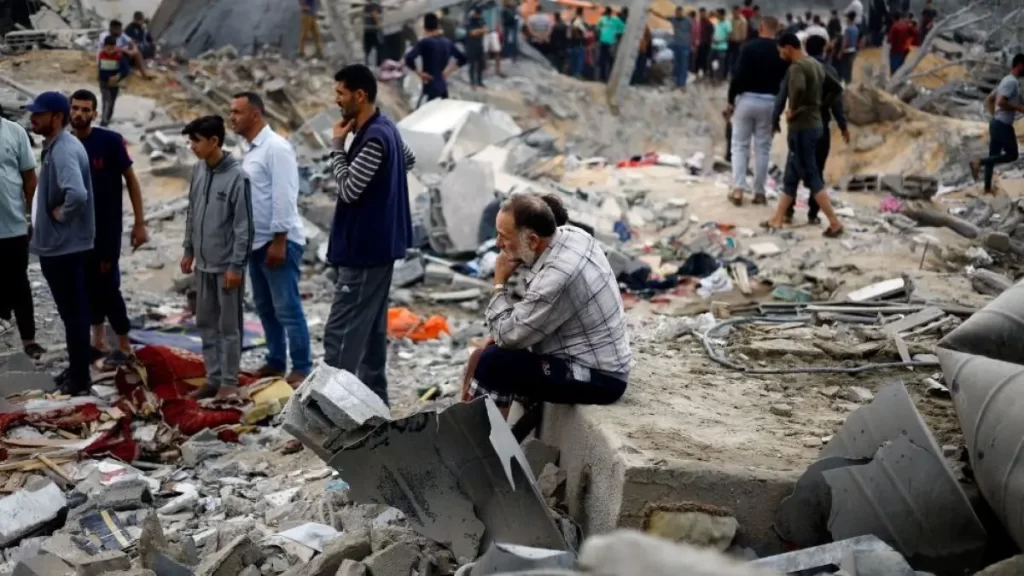November 13, 2023 – In the wake of the devastating Israel-Gaza Conflict, the international community faces the colossal task of addressing the catastrophic aftermath and rebuilding the war-torn Gaza Strip.
The Scale of Destruction in Gaza

Triggered by Hamas’s cross-border attack on October 7, 2023, Israel’s subsequent military response has inflicted unprecedented destruction on Gaza. Over 41,000 housing units have been destroyed, and more than 222,000 units are damaged, affecting nearly half of the enclave’s housing. The impact on infrastructure extends to hospitals and schools, with over half of Gaza’s hospitals and nearly two-thirds of primary health care centers out of service, and 53 ambulances damaged. Education has also been severely disrupted, with 279 educational facilities damaged, leaving none of Gaza’s 625,000 students able to access education.
The conflict has severely impacted water and sanitation, with a 90% drop in water consumption and significant damage to sewage systems. This has exacerbated the humanitarian crisis, with most of Gaza’s 65 sewage pumps out of service. Food security is equally dire, as electricity outages hinder the only operational mill in Gaza from processing wheat into flour, leading to severe shortages of essential food items. Humanitarian aid has been severely affected, with a drastic reduction in the number of trucks entering Gaza since the conflict began.
Economic and Humanitarian Crisis
The United Nations Economic and Social Commission for Western Asia (ESCWA) and the United Nations Development Programme (UNDP) report that approximately 390,000 jobs have been lost since the start of the war. The poverty rate in Gaza, already high at 61% in 2020, is expected to rise significantly, with the war costing Gaza between 4% and 12% of its GDP in 2023.
International Response and the Road Ahead
The international response to the conflict has been varied. Germany and Turkey have offered assistance, including medical aid, while the United States urges a de-escalation and a return to negotiations. The United Nations and humanitarian organizations call for an immediate ceasefire and the establishment of humanitarian corridors to aid the distressed population.
Efforts are ongoing to broker a ceasefire and navigate a path towards lasting peace, with diplomatic channels and negotiations happening behind closed doors. However, achieving a ceasefire remains a daunting task, given the steadfast objectives and demands of both sides.
The Question of Rebuilding Costs
The critical question remains: who will foot the bill for rebuilding Gaza? The massive scale of destruction and the dire economic and humanitarian situation necessitate substantial international support. However, the complexities of the Israeli-Palestinian conflict and the varying international stances on the issue make this a challenging endeavor.
As the world witnesses one of the most severe conflicts in recent history, the need for a comprehensive resolution that addresses the legitimate concerns of both Israelis and Palestinians becomes increasingly urgent. Only through dialogue, compromise, and mutual respect can the path to lasting peace be forged.
Note: This article is based on the latest available information and may not reflect the most recent developments in the Israel-Gaza conflict.








